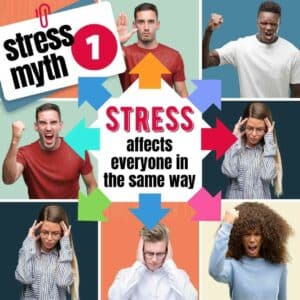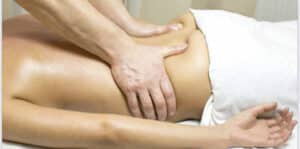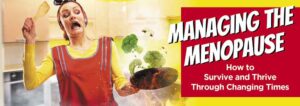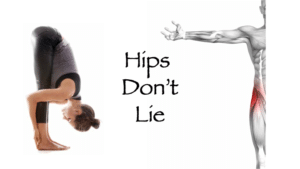Catch a virus such as flu, and you would expect to be lacking in energy for a few days until your body recovers. But in some cases this tiredness persists long after the virus has cleared up. This is a fairly common occurrence, known in the medical world as ‘post-viral fatigue’. The condition has been under the spotlight recently as many people have suffered ‘Long Covid’, when symptoms of coronavirus persist for more than a month. One of these symptoms is indeed a persistent fatigue. This blog will consider how exercise – balanced with rest – can help alleviate symptoms of post-viral fatigue, in order to help you make a full recovery.
Post-Viral Fatigue Symptoms and Causes
 Symptoms of post-viral fatigue can very from person to person, and can fluctuate in severity. As well as the obvious tiredness, someone with post-viral fatigue may experience anything from headaches and muscle pain, to poor sleep and flu-like symptoms such as dizziness and poor temperature control. (For a full list of symptoms read our newsletter which you can access by clicking here).
Symptoms of post-viral fatigue can very from person to person, and can fluctuate in severity. As well as the obvious tiredness, someone with post-viral fatigue may experience anything from headaches and muscle pain, to poor sleep and flu-like symptoms such as dizziness and poor temperature control. (For a full list of symptoms read our newsletter which you can access by clicking here).
In this way, it is very similar to Chronic Fatigue Syndrome; indeed, the two are often confused. However, while there is no consensus as to a cause for CFS, it is widely agreed that post-viral fatigue is caused when the immune response to a virus continues in the body once the virus has passed. Chemicals known as cytokines that are released to fight off a virus remain present, causing inflammation and preventing the body from functioning as normal. Unlike CFS, it is possible in most cases to make a relatively quick recovery from post-viral fatigue, when a carefully managed recovery programme is followed. Key to this is a good balance of exercise and rest.
Managing Post-Viral Fatigue
 So how do we take charge and manage Post-Viral Fatigue and help ourselves to recover from it? It is worth thinking holistically and looking at post-viral fatigue as a ‘biopsychosocial’ condition, meaning that while it may originate biologically, it affects – and can be affected by – our mental state and social conditions as well. For this reason it might be worth considering some alternative ways to look at treating the condition. about our diet, lifestyle, exercise and rest, and how we manage stress in our life. Here is a leaflet looking in more depth at what to consider.
So how do we take charge and manage Post-Viral Fatigue and help ourselves to recover from it? It is worth thinking holistically and looking at post-viral fatigue as a ‘biopsychosocial’ condition, meaning that while it may originate biologically, it affects – and can be affected by – our mental state and social conditions as well. For this reason it might be worth considering some alternative ways to look at treating the condition. about our diet, lifestyle, exercise and rest, and how we manage stress in our life. Here is a leaflet looking in more depth at what to consider.
Exercise as a Recovery Strategy from Post Viral Fatigue
 As a profession, we are normally the first to extoll the benefits of exercise: getting the body moving again after an injury can help speed up the recovery process, and the benefits of a good endorphin rush to everything from sleep to general wellbeing cannot be overstated. Indeed, we often encourage patients to get moving as soon as possible after an injury to aid their recovery. So it might sound a little strange to hear us saying that when it comes to exercise to alleviate post-viral fatigue, you should proceed with caution.
As a profession, we are normally the first to extoll the benefits of exercise: getting the body moving again after an injury can help speed up the recovery process, and the benefits of a good endorphin rush to everything from sleep to general wellbeing cannot be overstated. Indeed, we often encourage patients to get moving as soon as possible after an injury to aid their recovery. So it might sound a little strange to hear us saying that when it comes to exercise to alleviate post-viral fatigue, you should proceed with caution.
The reason for this is that when suffering from post-viral fatigue, your body is particularly susceptible to ‘post-exertional malaise’. As your energy levels can fluctuate from day to day, you might feel like you can take on your normal 5k one day, only to find you feel much worse the next. Sometimes it only takes a very minimal level of activity to provoke symptoms of post-viral fatigue; certainly doing too much too soon can actually impede your recovery. For this reason, we would recommend adopting a ‘Graded Exercise Therapy’ approach. Again we have a leaflet on this.
But in essence this involves the following steps:
- Find your baseline level (i.e. what you can comfortably do every day, even on a bad day). Note this might be much less than you would normally be used to doing. Gentle stretching and walking are good ways to start.
- Commit to doing this every day. (It helps if the exercise is something you enjoy).
- Build up in small steps as you are ready.
The most important part of this process is the first – finding a baseline level and building your exercise routine around this to make sure that you do not over-exert yourself. This is also known as ‘pacing’ and again we have a leaflet covering this topic at this link.
In just the same way that a marathon runner would pace themselves during a race to make sure they don’t go too fast too early, you should find a level of exercise that you will be able to consistently sustain throughout your recovery period. This pacing also relates to activities that require mental exertion such as work, daily chores or socialising.
It can help to set yourself goals, but make sure these are achievable and realistic in order to keep yourself motivated. It doesn’t matter how long it takes to regain your fitness – the most important thing is to exercise frequently. For more on setting realistic exercise expectations, see this helpful document at this link.
Rest for Post-Viral Fatigue
 When suffering from post-viral fatigue, the rest you take is just as important as the exercise you do. It might seem strange, but in this condition that makes you feel tired all the time, the quality of your sleep is often one of the areas that suffers most. Luckily, there are some simple steps you can take to improve your ‘sleep hygiene’. Having a regular bedtime routine in place that involves relaxing activities such as a bath or perhaps some breathing exercises can help ‘train’ your body to sleep. It is important to avoid too much stimulation before bed, so try and turn off screens (that includes your phone!) at least an hour before you go down.
When suffering from post-viral fatigue, the rest you take is just as important as the exercise you do. It might seem strange, but in this condition that makes you feel tired all the time, the quality of your sleep is often one of the areas that suffers most. Luckily, there are some simple steps you can take to improve your ‘sleep hygiene’. Having a regular bedtime routine in place that involves relaxing activities such as a bath or perhaps some breathing exercises can help ‘train’ your body to sleep. It is important to avoid too much stimulation before bed, so try and turn off screens (that includes your phone!) at least an hour before you go down.
It is also a good idea to establish a morning routine. Set an alarm and commit to getting up at the same time each day, no matter how tired you might feel. The sleep you get after hitting the snooze button is rarely restorative, and can result in that ‘groggy’ morning feeling.
Finally, no matter how tired you might feel during the day, avoid taking naps. The aim is to establish a solid sleeping pattern, ideally around eight hours, in which your body has the deep, restorative rest it needs. We’ve covered sleep hygiene in more detail at this link.
Managing Stress
Stress in healthy people is a great way to help us focus and perform well. However, when we are feeling “burnt out” already, it can just increase unhelpful anxiety and tension. Managing stress is key to helping you recover well. Here is a leaflet looking into Stress in relation to Post-Viral Fatigue (and also Chronic Fatigue Syndrome).
CBT
 Cognitive behavioural therapy is a form of talking therapy that can help you realise when and how your thoughts might not be helping you achieve the outcomes you desire. The underlying theory behind CBT is that our patterns of thought are extrinsically linked to our feelings, behaviour and physical sensations. This is not to suggest that post-viral fatigue is ‘all in the mind’; rather, exploring CBT as a way to aid recovery from the condition is to acknowledge that it can have an affect on your mental state as well.
Cognitive behavioural therapy is a form of talking therapy that can help you realise when and how your thoughts might not be helping you achieve the outcomes you desire. The underlying theory behind CBT is that our patterns of thought are extrinsically linked to our feelings, behaviour and physical sensations. This is not to suggest that post-viral fatigue is ‘all in the mind’; rather, exploring CBT as a way to aid recovery from the condition is to acknowledge that it can have an affect on your mental state as well.
When suffering from a condition such as post-viral fatigue, it can be easy to slip into a pattern of negative thoughts, which can affect everything from your motivation to exercise, to your body’s ability to recover. CBT offers a practical, proven way to address these issues. We’ve produced a leaflet covering CBT for post-viral fatigue here at this link.
Socialising
It is also important to acknowledge the effect that social support can have on recovery from post-viral fatigue. The symptoms of PVF can leave you feeling reluctant to socialise and like you want to withdraw until you feel better. However, it is important to maintain some social activity, as isolation can add to feelings of fatigue and have a negative impact on your wellbeing. If seeing your friends feels like too much, it may be worth considering a support group for those with PVF.
In Summary
In summary, post-viral fatigue is a very real, and debilitating condition that affects those suffering in a variety of different ways. If not managed correctly, it can lead to the more serious, long term Chronic Fatigue Syndrome. However, by taking a proactive approach to managing the condition, with techniques such as Graded Exercise Therapy and CBT, the condition will usually abate over time.
For advice on structuring your Graded Exercise routine, or on any other aspect of the topics we have covered today, give our clinic a call and we’ll be happy to help refer you to personal trainers and physiotherapists that best fit your current condition and goals. And why not promote rest by booking a massage?
STOP PRESS: In August this year 2021, NICE (National Institute for Health and Care Excellence) announced that it would publish updated recommendations on treatment for people with Chronic Fatigue Syndrome/ME. The interim recommendations stress that CBT and Graded Exercise Therapy should only be offered by suitably qualified and experienced Health Care Professionals, who offer them in full or partially in a flexible and collaborative way. There have been reports from people with CFS/ME that sometimes these therapies interfere with recovery. NICE are also looking in depth at the experience of people recovering from COVID-19. Click here for the advice.






